The Medical Content Examiner’s Report
***
Ladies, Gentlemen, Non-Binaries,
Perhaps a proper report shouldn’t start in epistolary format, but I feel that my presentation at the 2021 Healthcare Internet Conference was really a love letter to my work over the last couple years. Mind you that work is not over, but still it’s been and continues to be a labor of love.
So what better tribute than to present on all my favorite things? We did indeed, me and my audience, become medical content examiners, for an hour or so.
Please enjoy this summary of the highlights, and, as always,
Cheers,
J
***
The Body—of Content
Timeline: August 2021
Data collection period: FYs 20 & 21, Jul 2019–Jun 2021
When I started planning this presentation, it wasn’t so much from the perspective of a problem to be solved, as a case study of an experience from the bottom up. Nine+ years ago, when I started this job at University of Utah Health, I had no idea where it would take me. Right now, it’s into the realms of content strategy.
Before presenting, I always present/workshop my ideas for an audience. I find I can get very stuck inside my own perspective, and the feedback I get from my own reviewers is invaluable. For this presentation the feedback was: What are you making an argument in favor for? What problem are you really trying to solve?
I was intent on talking about the problem that I did solve: How to find organization and meaning in the content I worked on and propel it forward. Feedback from the team identified for me the question and the problem that we did solve: Documentation in service of content strategy.^
I covered the three following learning objectives in my presentation.
1. Documentation in Content Strategy
There are many pros and cons for documentation. Agile project management processes were formed on the mass retirement of much of documentation, but I think most content strategists could find value in documenting their content strategy.
In a poll I was able to conduct at HCIC21 (thanks to the conference’s use of the app Whova, which made the experience a pleasure), I found that 70% of my poll respondees did not have a documented content strategy.
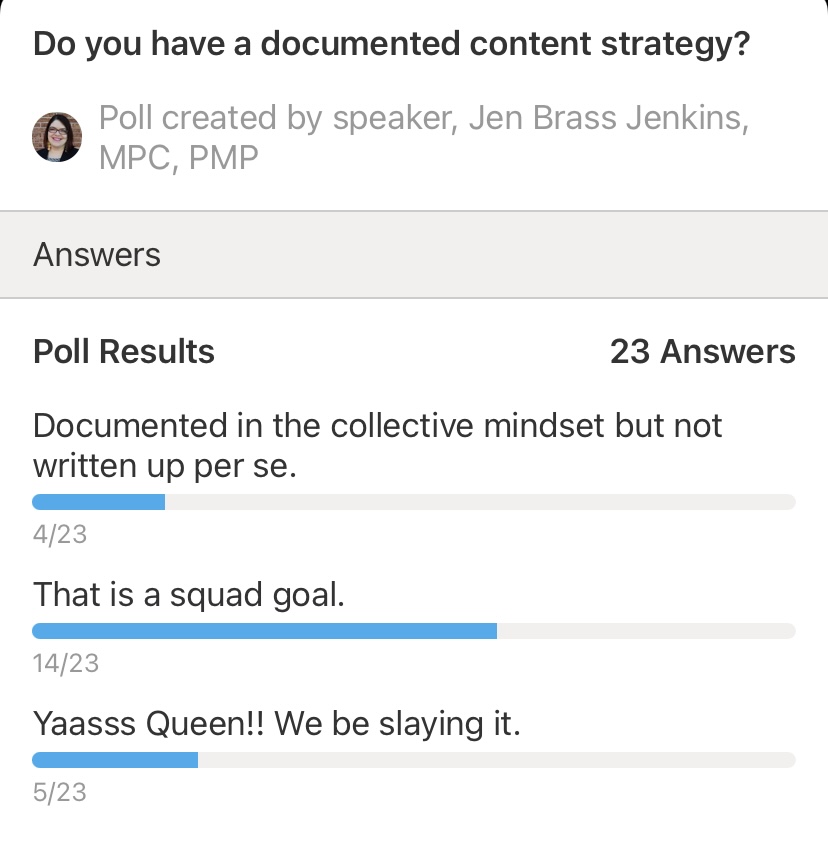
The Content Marketing Institute notes that compiling a documented content strategy makes you feel more successful because you more easily demonstrate your success and feel more effective.
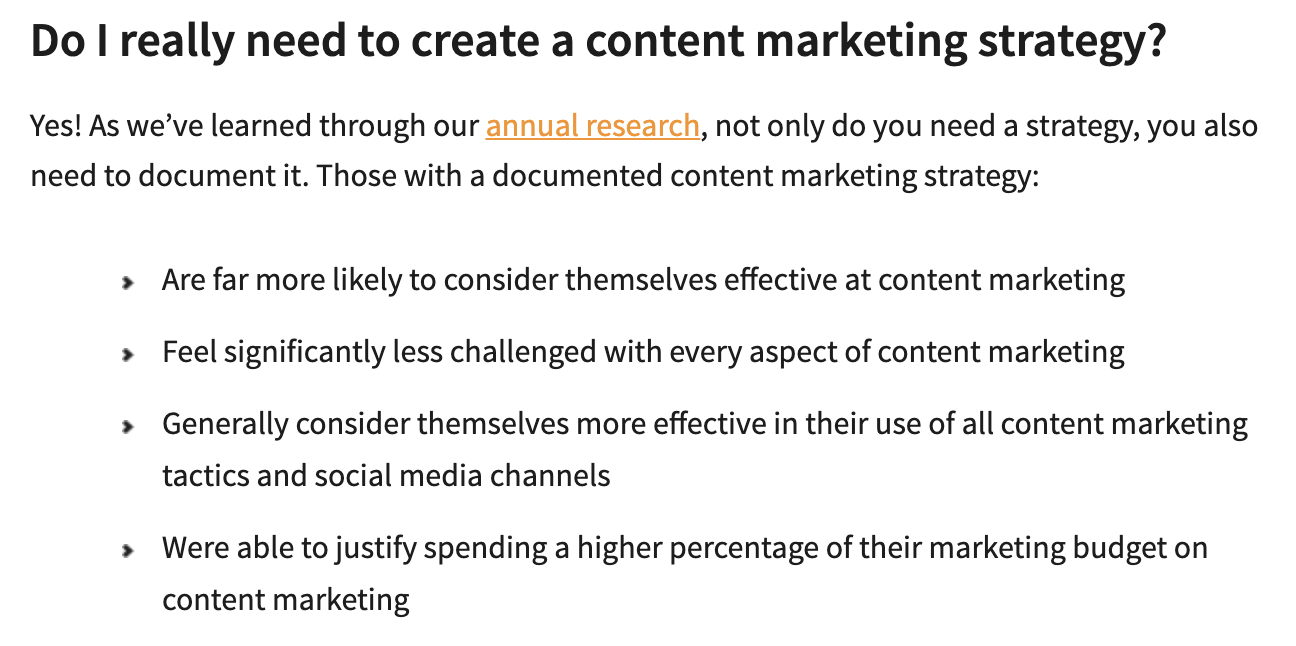
Boy howdy do I feel that way! The efficacy and control I feel over our work—not to mention contribution—was and remains significantly heightened by our use of a documented content strategy.
Document your #contentstrategy – don’t let your hard planning work go by the wayside. @chrliechaz @UofUHealth #hcic21
— Mariah Obiedzinski (@MariahWrites) November 3, 2021
2. The Bone Structure—Content Modeling
For some reason, content modeling always felt somewhat of an enigma to me. I think that the more you dive into your content—and in this case document it—the clearer it becomes. Now I need to figure out a better way to communicate that model as my current model is a wee bit involved.
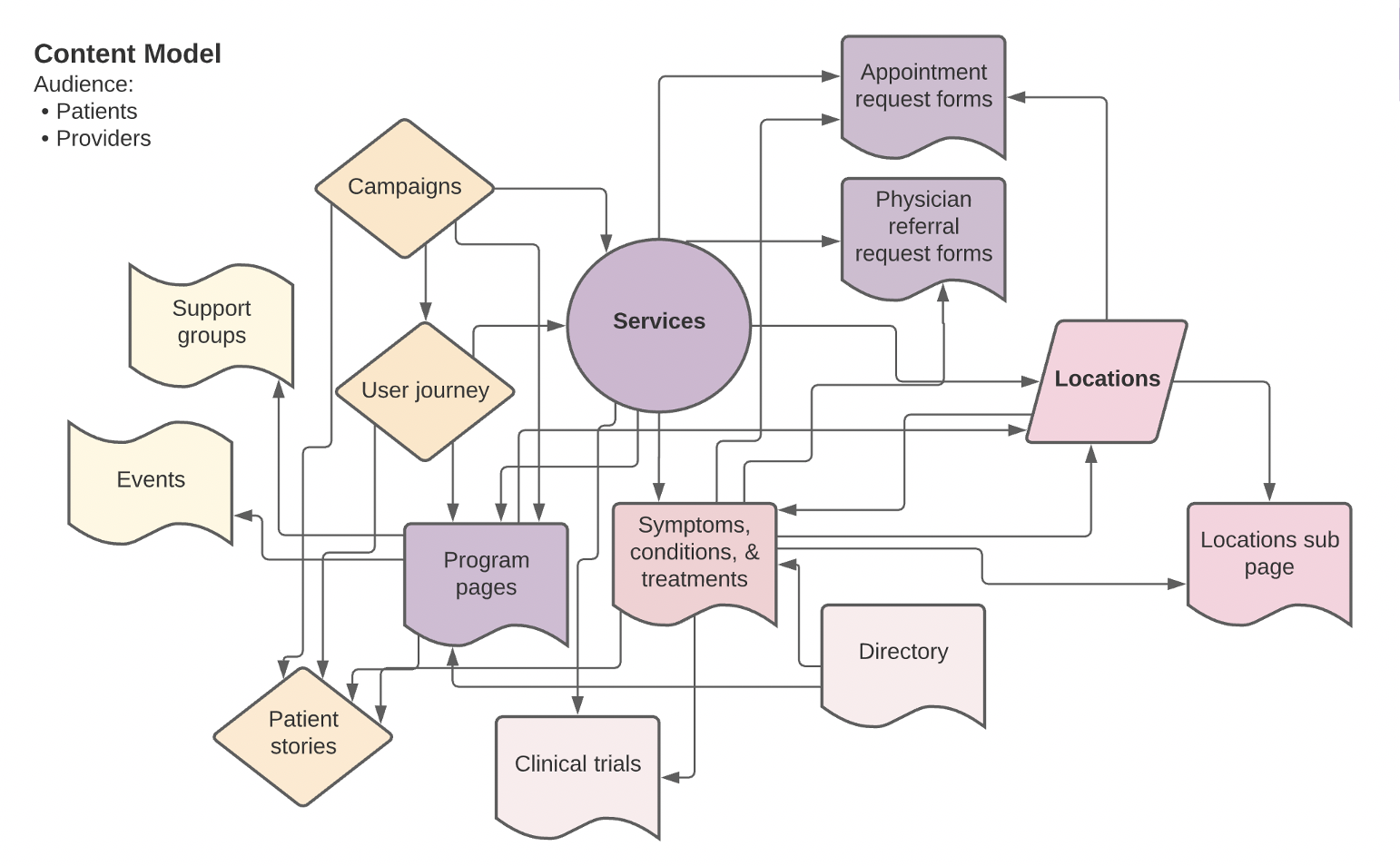
I also expanded this model out to our entire ecosystem. I plan on using this model to communicate the expanse of our content types and perhaps argue in favor of a more coordinated approach. There is no doubt that we collaborate, but I know we can do so better and more clearly in a way that impacts our users.
Your whole body of content (blog, service line, and ad content) is all out there together. Shouldn’t it all WORK together? @chrliechaz @UofUHealth #hcic21
— Mariah Obiedzinski (@MariahWrites) November 3, 2021
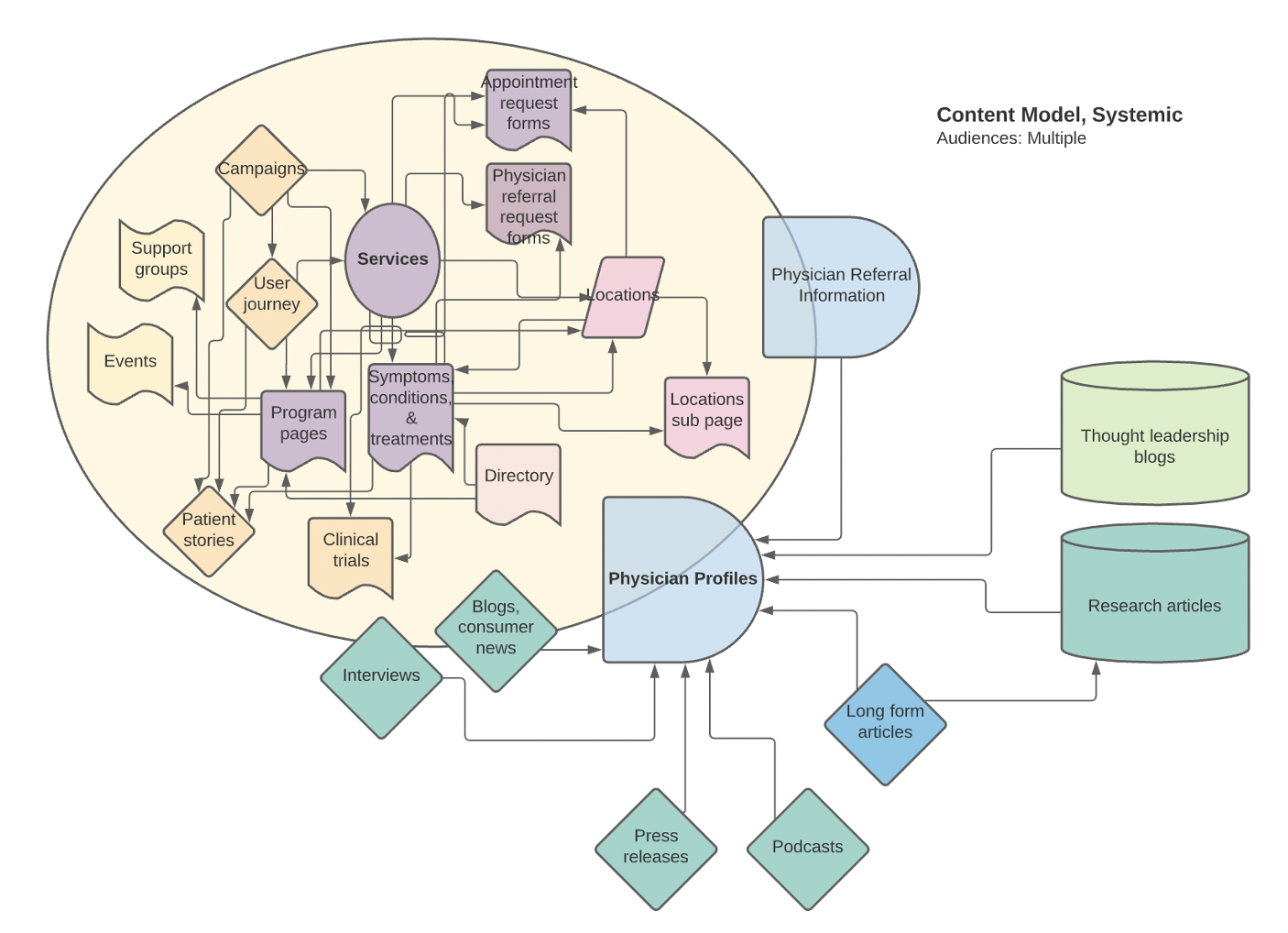
3. The Analysis—A Reporting Process
Analysis is ongoing, as we all know. Whether it’s in pdf, dashboard, or other interactive format, the visualization of a body of work is most gratifying. It also can lead to a supremely successful feedback loop with particular clients. Here’s one example for you, the one I referenced in my presentation but didn’t include in the slides.
Skull Base Surgery Program
Clients: Neurosurgery & Otolaryngology Services
First off, I have to applaud these services for their collaboration. Collaboration between services in a health system can sometimes be very challenging. (Does the financial reimbursement model have something to do with that?) Whatever the cause, it takes forward-thinking specialists who can give patients an easier entry to get high quality care. And putting the patient first is the difference between a fair experience and an excellent one.
When we started work on the website for this program, our subject matter experts were very insistent on two things:
- We needed a program webpage.
- We needed webpages specific to anterior and lateral skull-base surgery.
Of course, I never say no to our stakeholders (in that direction lies madness…). I do, however say “and…”. In this case, I said, “and” to these pieces:
You don’t have to say no. But you can recommend otherwise and give data. @chrliechaz #hcic21
— Mariah Obiedzinski (@MariahWrites) November 3, 2021
These were experiments, of course. As you can see from the below screenshot, thanks to the experiments, the site traffic increased exponentially.
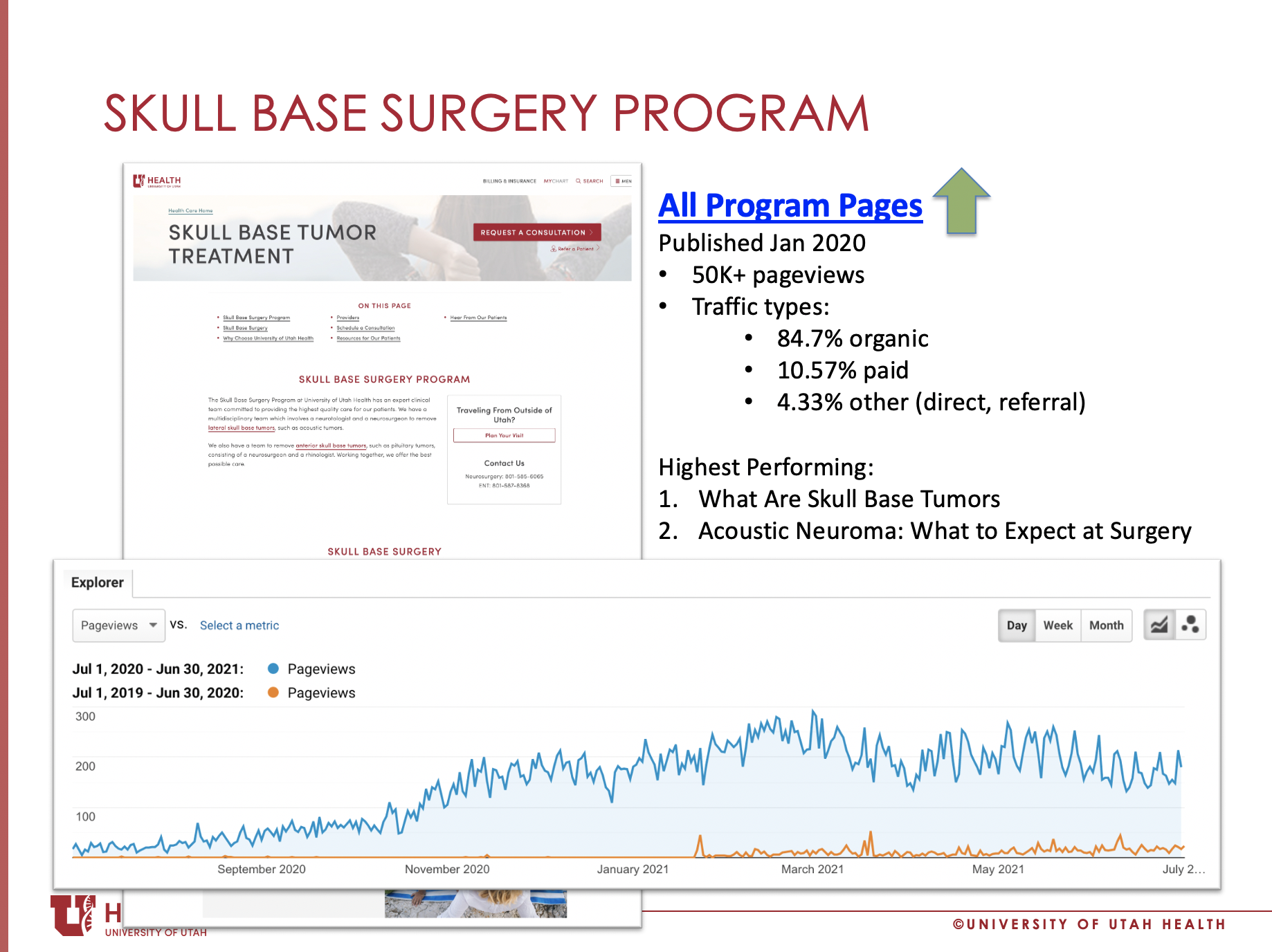
Users want to know what they will experience, where, and how.
In the report back to the client, there may have been some shocked faces. Then there was increased belief in our credibility. Now there is serious excitement for all of us. We are ALL collaborators.
I look forward to what we are compiling now to increase our positive patient experiences.
Feeling like a mad data scientist certainly increases my feelings of efficacy and satisfaction. There is nothing more satisfying than establishing a successful and collaborative team that cares about the end goal: empowering patients to find good, quality healthcare.
The Writeup
Then, in the presentation, I shared our content strategy template, which you can find here. It contains all the elements you would expect.
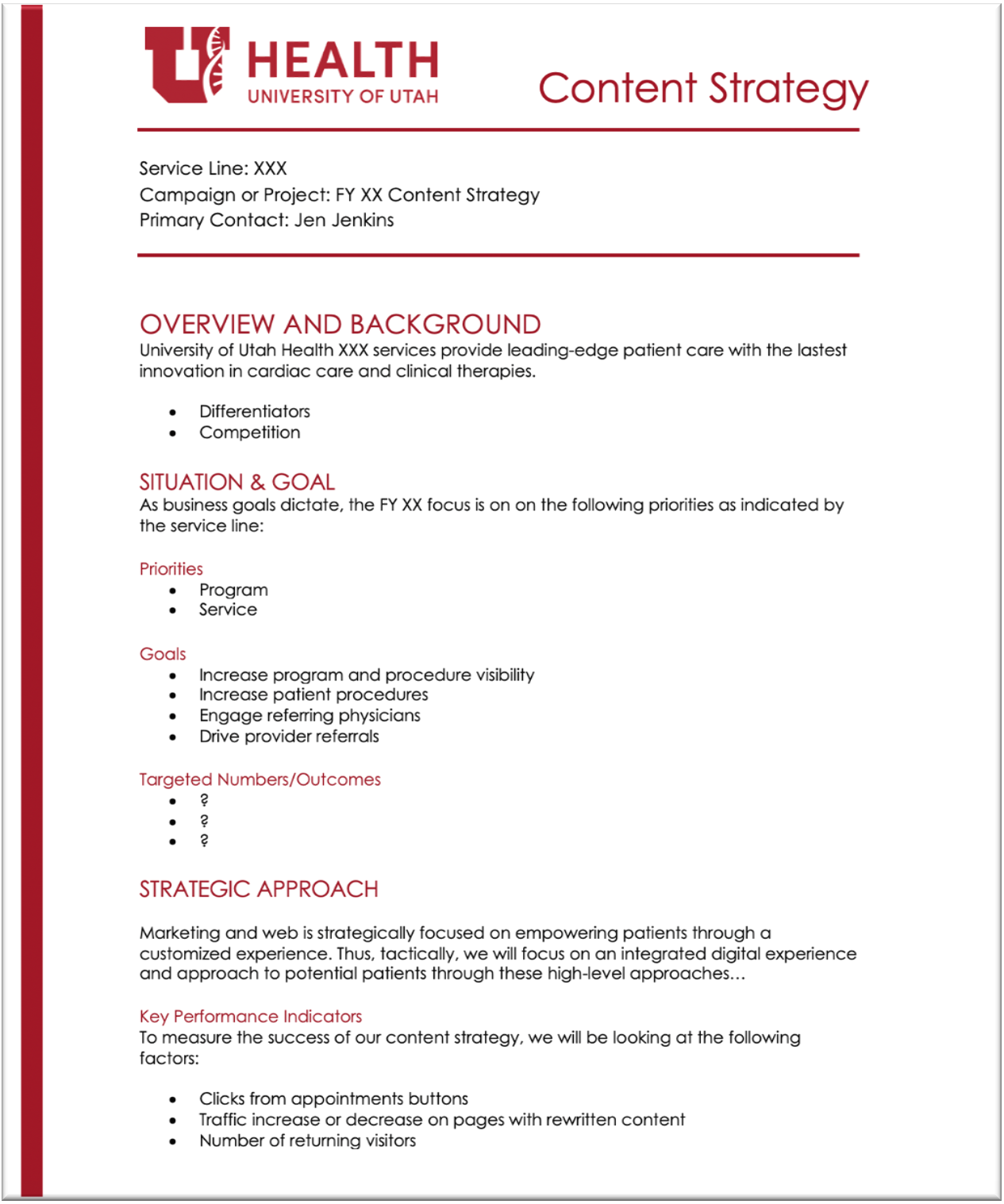
As we continue to work on this year after year, we gather more information and build a greater understanding of our audiences. Will this someday lead to personalization and greater refinement for the sake of our users? I sure hope so!!
So there you have it! The autopsy, or at least the summary report. Let me know if you are using a documented content strategy and if it works for you. I’d love to hear your experiences.
*Werking it is a form of the verb “work” but in drag queen speak. If you want to meet the forerunners of pop culture, do a little research into drag queens. If not, just sit back. You’ll soon see many of their -isms of every kind in mainstream pop culture.
^Immense thanks to my support team—Ashley, Nisjet, Sophie, Spencer B., and Mike H.—your absolute domination of all the things that needed to be done while I was gone made me feel so grateful. You are beyond competent—you slay.
